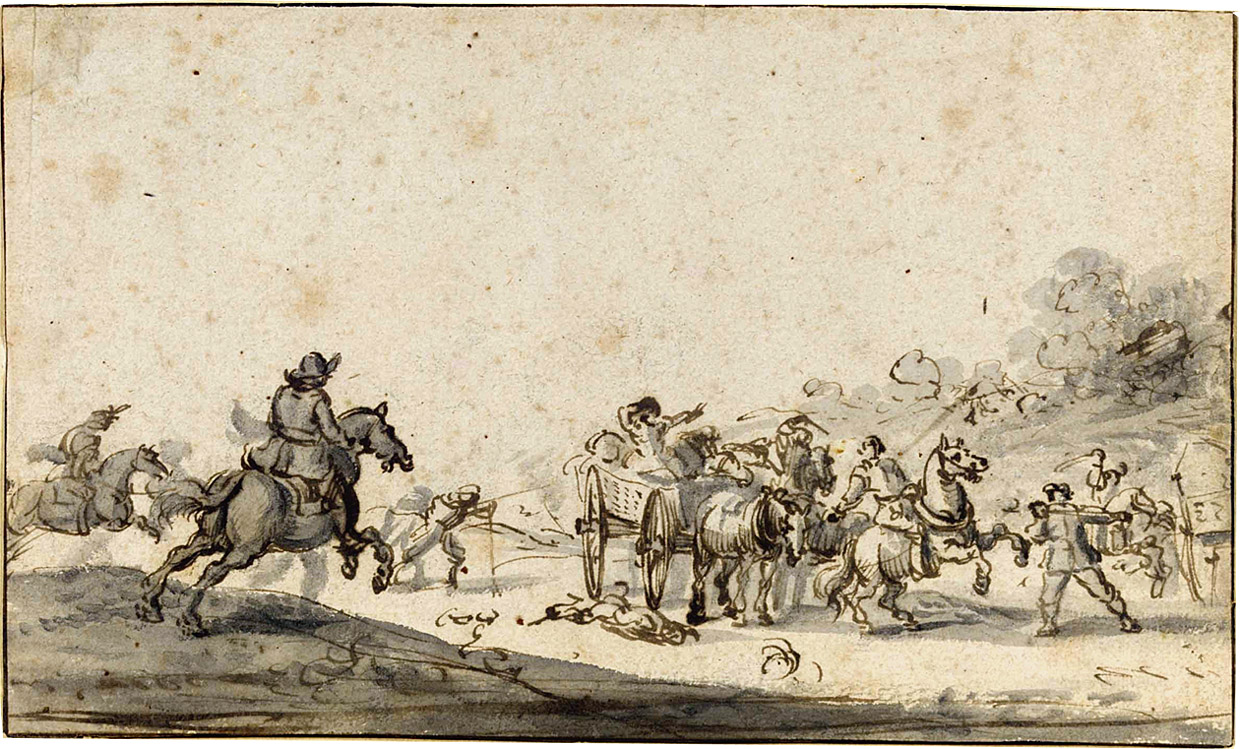|
S V Dlamini (2012)
''S v Dlamini'' was a South African court case. The central question was of duplication of convictions. The accused had been charged with and convicted on three counts of robbery. He was one of three perpetrators, one of whom was armed and had threatened a group of three women. The robbers had taken the women's property and departed. A 3-2 majority of the SCA found that there had been a separate intent by the robbers to rob each woman. There had, therefore, been no inappropriate duplication of convictions. Background At 7:00pm one evening in 2002, three women were meeting at the residence of one of them in order to travel to church together. Two of the women were already in the car, ready to leave, when the third woman arrived in her own vehicle. She got out of her vehicle and as she began walking towards the car in the driveway, three men in overalls moved towards it and pointed a gun at her. They demanded that the women hand over their possessions, and also the keys to bo ... [...More Info...] [...Related Items...] OR: [Wikipedia] [Google] [Baidu] |
Supreme Court Of Appeal (South Africa)
The Supreme Court of Appeal (SCA), formerly known as the Appellate Division, is the second-highest appellate court, court of appeal in South Africa below the Constitutional Court of South Africa, Constitutional Court. The country's apex court from 1910 to 1994, it no longer holds that position, having been displaced in constitutional matters by the Constitutional Court in 1994, and in General jurisdiction, all matters by 2013. It is located in Bloemfontein. Bloemfontein is often, and has been traditionally referred to, as the "judicial capital" of South Africa because of the court, although the Constitutional Court is based in Johannesburg. History On the creation of the Union of South Africa from four British colonies in 1910, the supreme courts of the colonies became provincial divisions of the new Supreme Court of South Africa, and the Appellate Division was created as a purely appellate court superior to the provincial divisions. It was the seat of some of the country's mo ... [...More Info...] [...Related Items...] OR: [Wikipedia] [Google] [Baidu] |
KwaZulu-Natal Division
The KwaZulu-Natal Division of the High Court of South Africa is a superior court of law with general jurisdiction over the KwaZulu-Natal province of South Africa. The main seat of the division is at Pietermaritzburg, while a subordinate local seat at Durban has concurrent jurisdiction over the coastal region of the province. the Judge President of the division is Thoba Poyo-Dlwati. History The Natalia Republic, established in 1839 by Voortrekkers, was annexed by Britain in 1843 and renamed Natal. In 1844 it was attached to the Cape Colony, and in 1846 a District Court for Natal was established with its seat in Pietermaritzburg. In 1856 Natal was detached from the Cape and became a separate colony, and in 1857 the District Court was replaced by a Supreme Court of Natal. When the Union of South Africa was formed in 1910, the Supreme Court of Natal became the Natal Provincial Division of the Supreme Court of South Africa; at the same time, the circuit court at Durban became the D ... [...More Info...] [...Related Items...] OR: [Wikipedia] [Google] [Baidu] |
South Africa
South Africa, officially the Republic of South Africa (RSA), is the Southern Africa, southernmost country in Africa. Its Provinces of South Africa, nine provinces are bounded to the south by of coastline that stretches along the Atlantic Ocean, South Atlantic and Indian Ocean; to the north by the neighbouring countries of Namibia, Botswana, and Zimbabwe; to the east and northeast by Mozambique and Eswatini; and it encloses Lesotho. Covering an area of , the country has Demographics of South Africa, a population of over 64 million people. Pretoria is the administrative capital, while Cape Town, as the seat of Parliament of South Africa, Parliament, is the legislative capital, and Bloemfontein is regarded as the judicial capital. The largest, most populous city is Johannesburg, followed by Cape Town and Durban. Cradle of Humankind, Archaeological findings suggest that various hominid species existed in South Africa about 2.5 million years ago, and modern humans inhabited the ... [...More Info...] [...Related Items...] OR: [Wikipedia] [Google] [Baidu] |
Robbery
Robbery is the crime of taking or attempting to take anything of value by force, threat of force, or use of fear. According to common law, robbery is defined as taking the property of another, with the intent to permanently deprive the person of that property, by means of force or fear; that is, it is a larceny or theft accomplished by an assault. Precise definitions of the offence may vary between jurisdictions. Robbery is differentiated from other forms of theft (such as burglary, shoplifting, pickpocketing, or car theft) by its inherently violent nature (a violent crime); whereas many lesser forms of theft are punished as misdemeanors, robbery is always a felony in jurisdictions that distinguish between the two. Under English law, most forms of theft are triable either way, whereas robbery is triable only on indictment. Etymology The word "rob" came via French from Late Latin words (e.g., ''deraubare'') of Germanic origin, from Common Germanic ''raub'' "theft". Types ... [...More Info...] [...Related Items...] OR: [Wikipedia] [Google] [Baidu] |
Intention (criminal Law)
In criminal law, intent is a subjective state of mind () that must accompany the acts of certain crimes to constitute a violation. A more formal, generally synonymous legal term is : intent or knowledge of wrongdoing. Definitions Intent is defined in English law by the ruling in ''R v Mohan'' 976QB 1 as "the decision to bring about a prohibited consequence" ( malum prohibitum). A range of words represents shades of ''intent'' in criminal laws around the world. The mental element, or ''mens rea'', of murder, for example, was historically called malice aforethought. In some jurisdictions transferred intent allows the prosecution for intentional murder if a death occurs in the course of committing an intentional crime (see Felony murder rule). The intent for the other crime is transferred to the killing in this type of situation. The language of "malice" is mostly abandoned and intent element of a crime, such as intent to kill, may exist without a malicious motive, or even wit ... [...More Info...] [...Related Items...] OR: [Wikipedia] [Google] [Baidu] |
Firearms Regulation In South Africa
In South Africa, the ''Firearms Control Act 60 of 2000'' regulates the possession of firearms by civilians. Possession of a firearm is conditional on a competency test and several other factors, including background checking of the applicant, inspection of an owner's premises, and licensing of the weapon by the police introduced in July 2004. The South African government continues to codify new firearm-related laws, with the goal of protecting the general population. The regulation of firearms forms part of the mandate of the Department of Police, which is led by the Minister of Police. The Civilian Secretariat for Police Service (the Civilian Secretariat) serves as a technical advisory body to the Minister. In 2010, the process was undergoing review, as the South African Police Service (SAPS) was not able to process competency certifications, new licenses, or renewal of existing licenses in a timely manner. The minimum waiting period used to exceed 2 from the date of applicat ... [...More Info...] [...Related Items...] OR: [Wikipedia] [Google] [Baidu] |
Motor Vehicle Theft
Motor vehicle theft or car theft (also known as a grand theft auto in the United States) is the criminal act of stealing or attempting to steal a motor vehicle. In 2020, there were 810,400 vehicles reported stolen in the United States, up from 724,872 in 2019. Property losses due to motor vehicle theft in 2020 were estimated at $7.4 billion. There were 505,100 car thefts in the European Union (EU) in 2019, a 43% decrease from 2008. Methods Some methods used by criminals to steal motor vehicles: * Theft of an unattended vehicle without a key: the removal of a parked vehicle either by breaking and entry, followed by hotwiring or other tampering methods to start the vehicle, or else towing. In London, the police say that 50% of the annual 20,000 car thefts are now from high-tech OBD (Onboard Diagnostic Port) key-cloning kits (available online) and bypass immobilizer simulators. * Taking without owner's consent (TWOC): the unauthorized use of a car short of theft. This term ... [...More Info...] [...Related Items...] OR: [Wikipedia] [Google] [Baidu] |
Concurrent Sentence
In criminal law, a sentence is the punishment for a crime ordered by a trial court after conviction in a criminal procedure, normally at the conclusion of a trial. A sentence may consist of imprisonment, a fine, or other sanctions. Sentences for multiple crimes may be a concurrent sentence, where sentences of imprisonment are all served together at the same time, or a consecutive sentence, in which the period of imprisonment is the sum of all sentences served one after the other. Additional sentences include intermediate, which allows an inmate to be free for about 8 hours a day for work purposes; determinate, which is fixed on a number of days, months, or years; and indeterminate or bifurcated, which mandates the minimum period be served in an institutional setting such as a prison followed by street time period of parole, supervised release or probation until the total sentence is completed. If a sentence is reduced to a less harsh punishment, then the sentence is said to have ... [...More Info...] [...Related Items...] OR: [Wikipedia] [Google] [Baidu] |
South African Criminal Law Reports
Case citation is a system used by legal professionals to identify past court case decisions, either in series of books called reporters or law reports, or in a neutral style that identifies a decision regardless of where it is reported. Case citations are formatted differently in different jurisdictions, but generally contain the same key information. A legal citation is a "reference to a legal precedent or authority, such as a case, statute, or treatise, that either substantiates or contradicts a given position." Where cases are published on paper, the citation usually contains the following information: * Court that issued the decision * Report title * Volume number * Page, section, or paragraph number * Publication year In some report series, for example in England, Australia and some in Canada, volumes are not numbered independently of the year: thus the year and volume number (usually no greater than 4) are required to identify which book of the series has the case reported ... [...More Info...] [...Related Items...] OR: [Wikipedia] [Google] [Baidu] |
S V Moloto
S, or s, is the nineteenth Letter (alphabet), letter of the Latin alphabet, used in the English alphabet, the alphabets of other western Languages of Europe, European languages and other latin alphabets worldwide. Its name in English is English alphabet#Letter names, ''ess'' (pronounced ), plural ''esses''. History Northwest Semitic abjad, Northwest Semitic Shin (letter), šîn represented a voiceless postalveolar fricative (as in 'ip'). It originated most likely as a pictogram of a tooth () and represented the phoneme via the acrophonic principle. Ancient Greek did not have a "sh" phoneme, so the derived Greek letter Sigma (letter), Sigma () came to represent the voiceless alveolar sibilant . While the letter shape Σ continues Phoenician ''šîn'', its name ''sigma'' is taken from the letter ''Samekh'', while the shape and position of ''samekh'' but name of ''šîn'' is continued in the ''Ξ, xi''. Within Greek, the name of ''sigma'' was influenced by its associatio ... [...More Info...] [...Related Items...] OR: [Wikipedia] [Google] [Baidu] |


